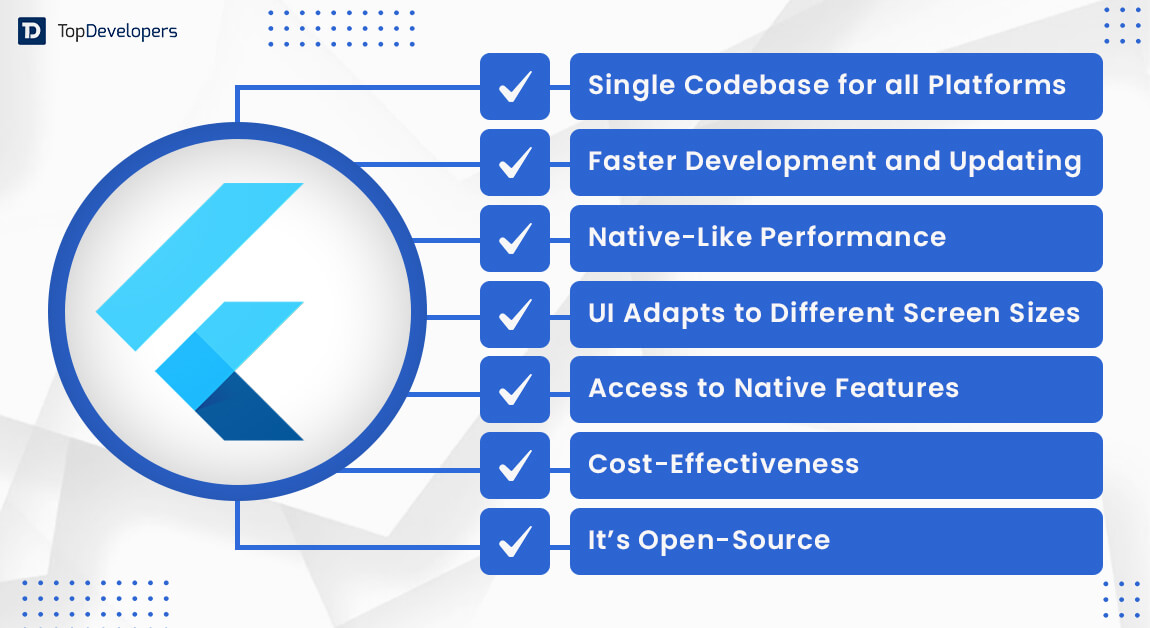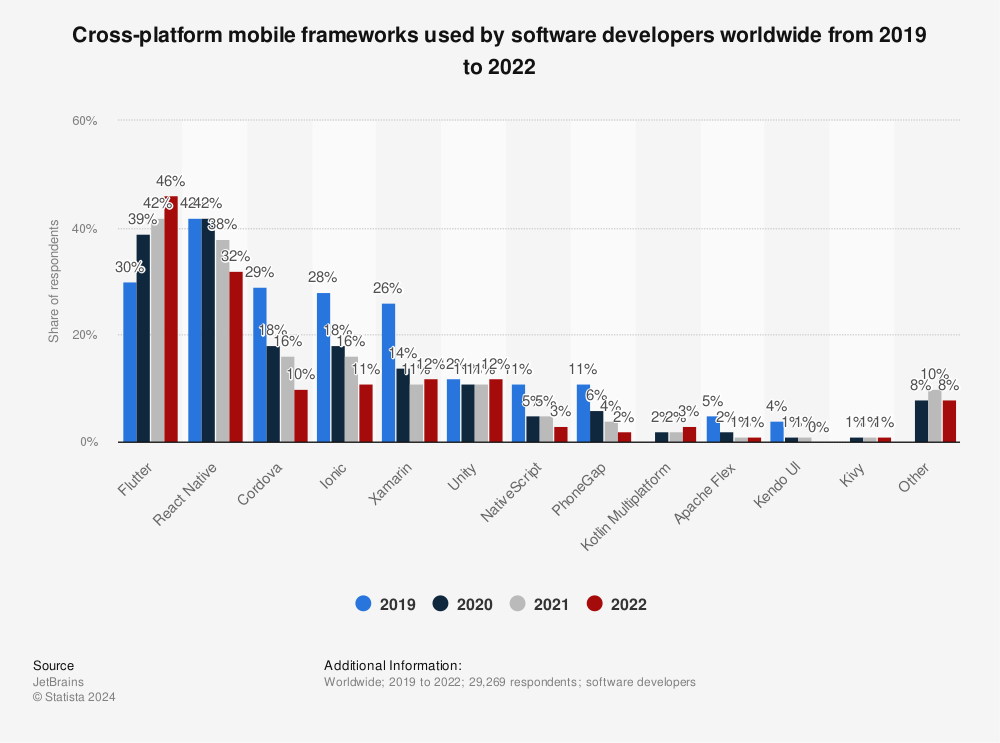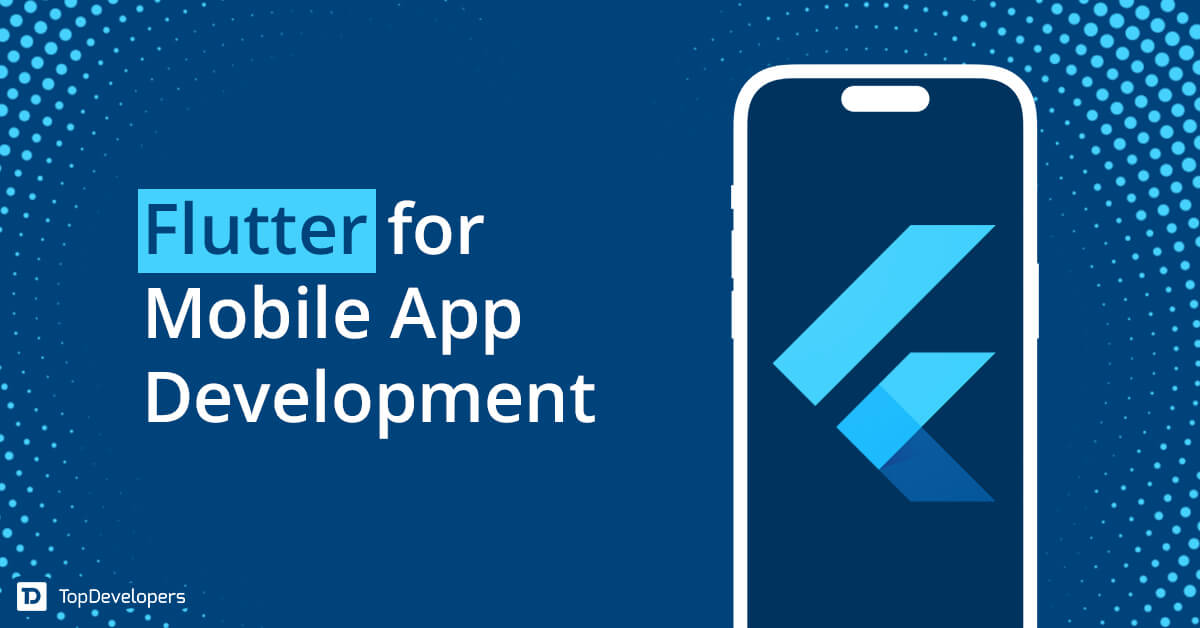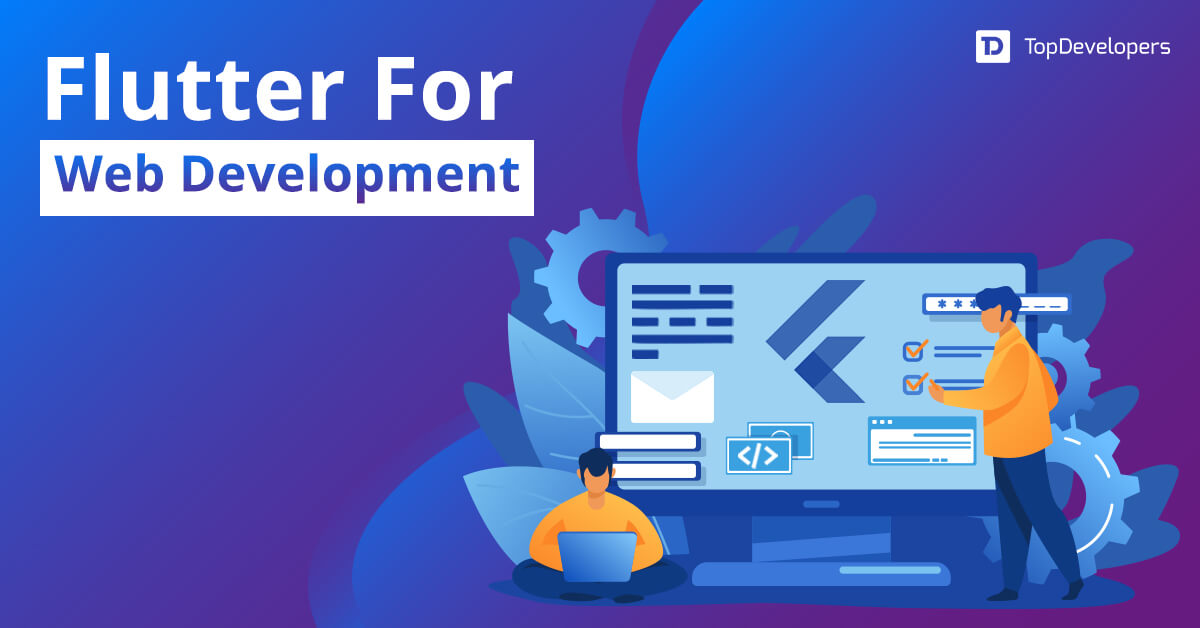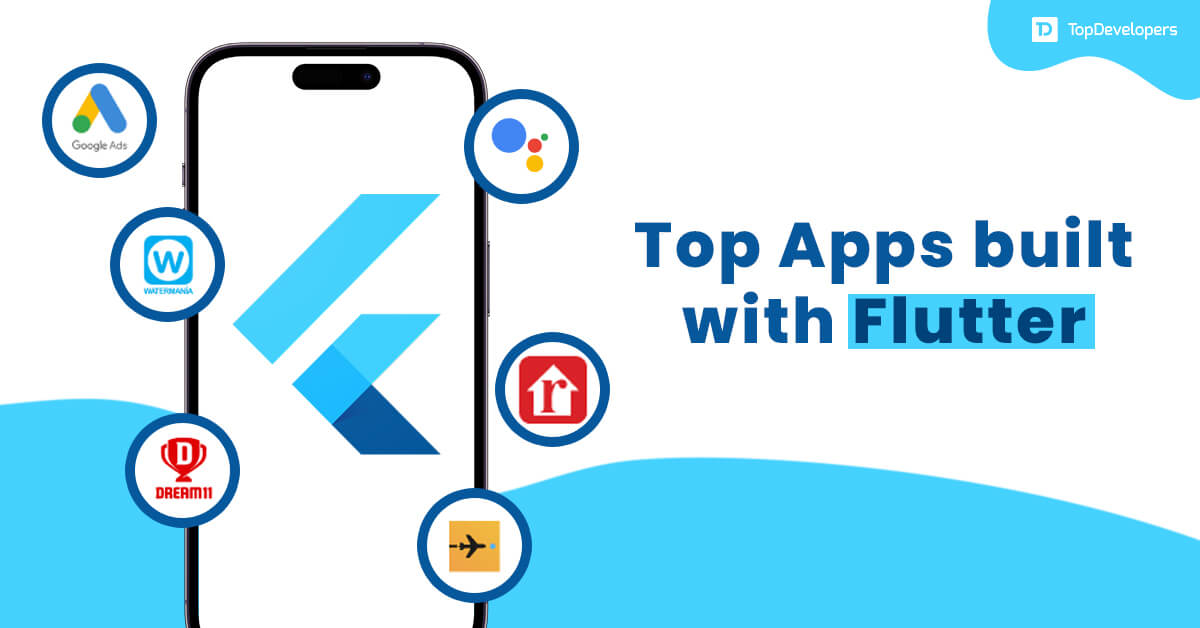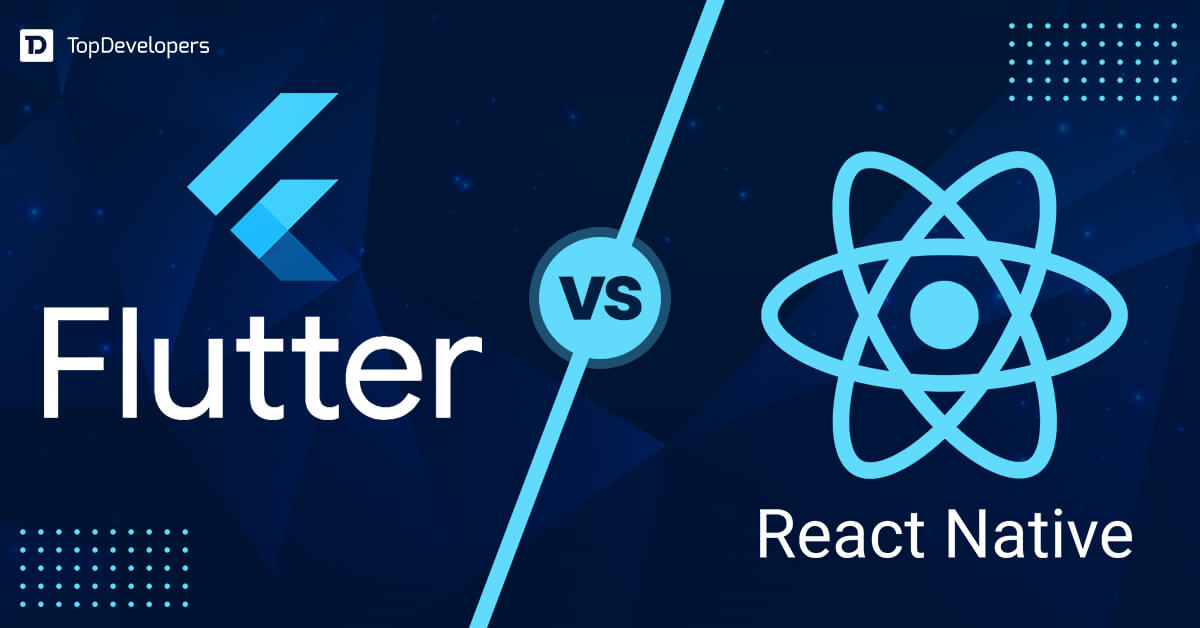
Undeniably, presently, life seems to be impossible without mobile applications. Worldwide, nearly five million apps are floating around the Google Play store and Apple Store, which users can download. The growing prominence of mobile apps has made the app market very competitive, which has made businesses rethink their mobile app development strategy.
Businesses are looking for a quick, simple, and easy way to get the app developed for multiple platforms in low-budget. That’s where, building the app for two different platforms android and iOS using one codebase, which is a cross-platform app development approach is gaining traction. Here the selection of the frameworks and other developmental tools for cross-platform development play a vital role in getting build a product that renders high performance and delivers the best user experience on all the platforms.
Flutter turned out as the best alternative that helps businesses shape the app idea into a full-fledged solution for multiple platforms using a common codebase without compromising on design, UX, performance, or any other factor. Top Flutter developers leverage pre-built widgets and UI components for attractive and functional app development that works seamlessly on various platforms.
Yet, if the popularity and growing usage of Flutter do not convince you to use the framework, a couple of more reasons are enlisted. Let’s understand in detail how a platform-agnostic framework- Flutter is the best choice for cross-platform app development.
Table of Contents
7 Reasons to Choose Flutter for Cross-Platform Development Project
Flutter offers several advantages when leveraged for mobile app development for cross-platform devices or multiple mobile OS that we will discuss in this section extensively.
Single Codebase for all Platforms
With Flutter, you write one codebase that can run on multiple platforms, including iOS, Android, web, and desktop. This means you don’t have to maintain separate codebases for each platform, thereby saving time, development cost, and effort. You can achieve up to 95% code reuse across platforms, which leads to faster development and easier maintenance.
In addition to mobile platforms, Flutter has expanded its support to desktop and web applications. With Flutter, you can build applications that run on Windows, macOS, Linux, and the web, further extending the reach of your codebase.
What’s more? when it comes to updating the cross-platform app with more features or UI redesign, updating the code once enables reflecting changes in all the apps without needing to concern about platform-specific coding.
Faster Development and Updations
Businesses look for a framework that helps them launch apps on various platforms in reduced time and low budget. Flutter’s hot reload feature speeds up the multi-platform mobile app development process by allowing cross-platform developers to make changes quickly without needing to restart the app or lose its current state.
Flutter injects the modified source code snippet into Dart virtual machine wherein Flutter rebuilds the widget tree and classes are updated with new fields and functions automatically. This way changes in code get updated and are viewed in real-time.
Hot reload enables rapid iteration, experimentation, and fine-tuning of the user interface, leading to faster development cycles and increased productivity. Thus saving your time and money.
Native-Like Performance
Flutter apps are compiled into native code, which enables them to achieve high performance. Taking a step ahead, The cross-platform framework facilitates User Interface and UI code sharing as there’s no need for platform-specific UI components for UI rendering.
Flutter’s architecture eliminates the need for JavaScript bridges or interpretation layers. Instead, it uses a high-performance rendering engine called Skia, which provides smooth animations, efficient UI rendering, and excellent performance on par with native applications. Thus, the usage of Flutter for your cross-platform helps you to connect with your mobile app users without spending extra budget on native app development.
Beautiful UI that Easily Adapts to Different Screen Sizes
As a top framework to build custom cross-platform applications, Flutter offers a rich set of customizable UI widgets, animation libraries, and extensive graphics enabling the creation of visually appealing and consistent user interfaces across different platforms.
It includes an extensive library of Material Design and Cupertino widgets, which follow the design guidelines of Android and iOS respectively. These widgets are highly customizable, which allows you to achieve pixel-perfect designs for your cross-platform apps that seamlessly adapt to various aspect ratios and screen sizes of different digital devices. Also, The support for 3D graphics allows the use of 3D tools for creating 3D meshes and models to build your cross-platform mobile app.
Access to Native Features
Businesses are increasingly opting for progressive web apps as an alternative to native apps, but not-up-to-the-par performance deters them. Unlike other cross-platform development frameworks, flutter excels in building high-performant PWAs as they are directly built into machine code and enable accessing native features.
Flutter is a cross-platform technology that provides a flexible bridge called “platform channels” that allow direct communication between Flutter and native code. This means any platform-specific features or APIs that are not yet available can be accessed and utilized through Flutter’s core framework. Flutter developers that you hire can leverage existing native code, access device sensors, use camera functionalities, and interact with third-party libraries seamlessly.
Cost-Effectiveness
Flutter’s cross-platform capabilities can save significant costs compared to developing separate native applications for each platform. With a single codebase, you can reduce development efforts, testing efforts, and maintenance costs. Moreover, Flutter’s fast development cycles and hot reload feature contribute to faster time-to-market, which can be cost-effective for businesses.
Additionally, Flutter ensures that there will be no compromise on the cross-platform app’s quality, design, and performance when the apps are built for multiple platforms, it saves huge amount of money that need to be spent at a later stage to fix the issues.
It’s Open-Source that improves Accessibility
Flutter enables easy access to the cross-platform development project’s codebase that provides great insight into the development process. Flutter has a vibrant and rapidly growing developer community for cross-platform development. This means finding resources, libraries, and packages to help solve problems and speed up development can be done easily. Additionally, the cross-platform app development framework benefits from strong community support, including regular updates and improvements.
While reporting bugs for cross-platform app development, the active community developers provide the necessary assistance that your hired Flutter app developers can avail of for better results.
What’s the Future of Flutter for Cross-Platform Development?
There are many factors to depict that Flutter is the future for cross-platform application development looks promising. Here are some aspects to back it up:
Continued Growth: Flutter has gained significant popularity as a cross-platform development platform since its release in 2017 and it continues to grow rapidly. 46% of software developers using Flutter is a testament to Flutter’s ongoing success and indicates a bright future for the framework.
Image Source: Statista
Wider Platform Support: Flutter started as a mobile app development framework targeting iOS and Android and has expanded its platform support to desktop (Windows, macOS, Linux) and the web.
Integration with Fuchsia: Flutter is the primary UI framework for building applications on Fuchsia. As Fuchsia gains more traction, Flutter’s importance and adoption are likely to increase, especially for cross-platform development targeting Fuchsia-powered devices.
Growing Ecosystem: The Flutter package ecosystem offers solutions for various functionalities like state management, networking, UI components, and more. This growing ecosystem with Flutter 3.7 helps developers to accelerate their cross-platform development process and leverage existing solutions.
Performance Enhancements: Flutter’s team is focused on making Flutter even faster, reducing app startup times, and enhancing rendering performance. These ongoing efforts ensure that Flutter remains competitive with native app development and provides a high-performance experience for users.
Growing Industry Adoption: Flutter has been embraced by several big-name companies across different industries, including Google, Alibaba, Tencent, BMW, ByteDance, and many more. This adoption demonstrates the trust and confidence that businesses have in Flutter as a cross-platform development solution.
Conclusion
Flutter for mobile app development has gained major traction and is now picking up the pace for cross-platform development solutions too. It’s clearly visible from the future of Flutter that’s changing. The current trajectory of Flutter suggests a positive outlook. Its continuous growth, expanding platform support, strong ecosystem, performance improvements, and industry adoption contribute to a promising future for Flutter as a cross-platform development framework.
It’s important to note that while Flutter offers numerous advantages- faster development, high performance, native-like experiences, and more, it may not be the best fit for every project or use case. Factors such as the complexity of the application, specific platform requirements, and performance-intensive tasks should be considered when choosing a cross-platform framework.
If you want to know whether it’s well to go ahead using this framework or want to gain insights into Flutter app development services for cross-platform development, get in touch with a reliable Flutter app development company. If you are having trouble finding credible resources get in touch with TopDevelopers.co, an online B2B directory to help you get in touch with top Flutter developers for your project requirements.
 Avantika Shergil
| Jul 18, 2023
Avantika Shergil
| Jul 18, 2023
Avantika Shergil is a technology enthusiast and thought leader with deep expertise in software development and web technologies. With over 8 years of experience analyzing and evaluating cutting-edge digital solutions, Avantika has a knack for demystifying complex tech trends. Her insights into modern programming frameworks, system architecture, and web innovation have empowered businesses to make informed decisions in the ever-evolving tech landscape. Avantika is passionate about bridging the gap between technology and business strategy, helping businesses build customized software and website, and understand about different tools to leverage effectively for their ventures. Explore her work for a unique perspective on the future of digital innovation.
